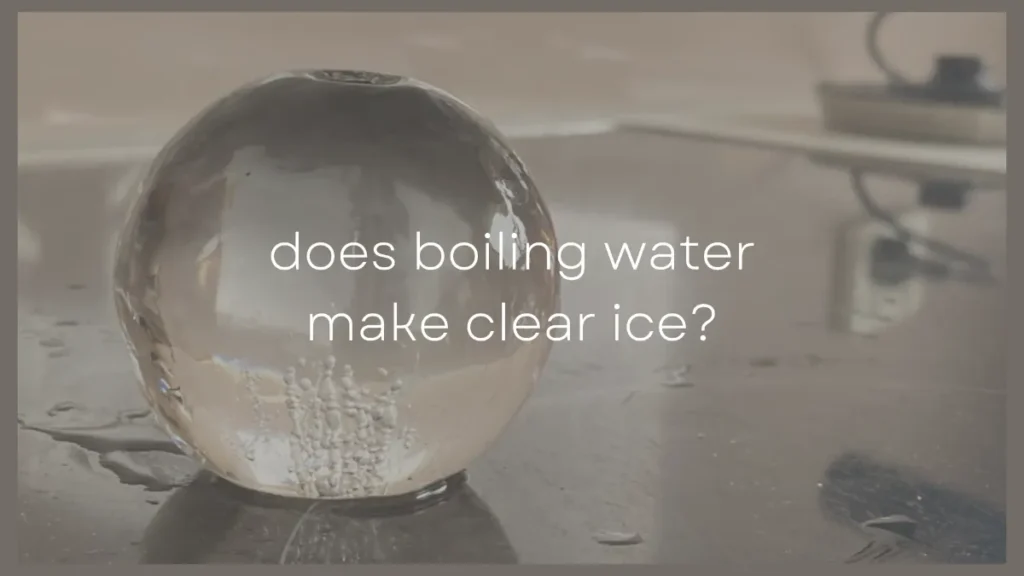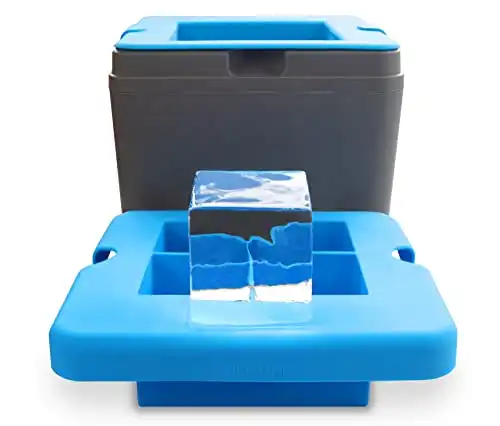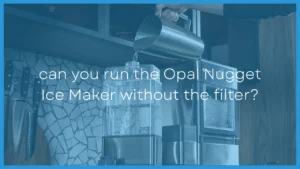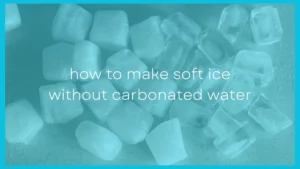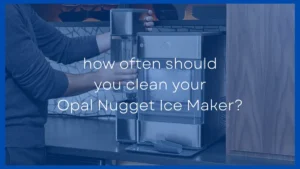While making clear ice sounds like something that should be super easy to do it can be quite tricky to get right and there are a lot of small mistakes people make that leave their ice looking white or not being as crystal clear as they would like.
By understanding exactly how clear ice is made, and by avoiding common clear ice mistakes, you can make the clearest ice possible every single time and wow your guests with amazing high-quality ice cubes in your drinks and cocktails.
Does Boiling Water Make Clear Ice?
There is the common misconception that in order to get clear ice all you have to do is boil water before freezing it and presto – your ice will be crystal clear.
However, in practice this doesn't work as you can see in the video below:
Boiling water DOES make ice slightly clearer than ice directly from the tap, but it doesn't make crystal clear ice. I did a full breakdown on why boiling water doesn't make clear ice – but here's the key points.
The reason boiling water makes ice slightly clearer is that inside water you have a lot of dissolved gases like nitrogen and oxygen.
As water freezes these gases get pushed out of the water and appear as little air bubbles in your ice, making your ice white.
However, if you boil your water first you'll noticed that before the water even starts boiling little air bubbles will start to appear. This is those dissolved gases being expelled from the water.
As the water boils more dissolved gases are removed so when the water eventually freezes there are less gas bubbles left to come out of the water and so the ice is slightly clearer.
However, boiling water does NOT remove all gases from the way and air bubbles still will form in your ice making it white.
For the best results you want to use distilled water and omni-directional freezing to push all the air bubbles in one direction and away from your ice cubes.
The best way to do this in your home freezer is with a clear ice cube mold. Click here to see my list of the best clear ice makers you can buy but my go-to is the True Cubes Clear Ice Maker.
It's been around for a long time, has a very high rating and is used in a lot of bars as a way to easily make clear ice.
One of the best and most trusted clear ice makers. Simply fill the tray and place in the freezer and in 18-24 hours you'll have crystal clear ice cubes. Makes 2" x 2" x 2" cubes.
Can You Make Clear Ice Without a Cooler?
One of the best ways to make clear ice with water at home is to fill up a small cooler and place it in the freezer. But can you make clear ice without a cooler or ice mold?
You can but it's not easy to do.
You can make clear ice without a cooler or mold by using salt or by using another cold source such as dry ice or liquid nitrogen. Commercially they make clear ice without coolers by setting up large water baths which then freeze from the bottom upwards.
For all of these techniques you want something underneath your water/ice mold to be cold enough to freeze water. Then allow the water to freeze from the bottom up.
Does Salt Water Make Clear Ice?
Salt water can be used as one of the methods to make clear ice without a cooler or clear ice mold, but does salt water itself make clear ice?
No it doesn't.
Salt water does not create clear ice, but rather creates white ice if frozen in a traditional freezer. You can make clear ice made from salt water by using omni-directional freezing. However, because salt water contains dissolved salts and minerals it is more likely to have white spots when compared to using distilled water.
How To Make Clear Ice With Salt Water or Without a Mold
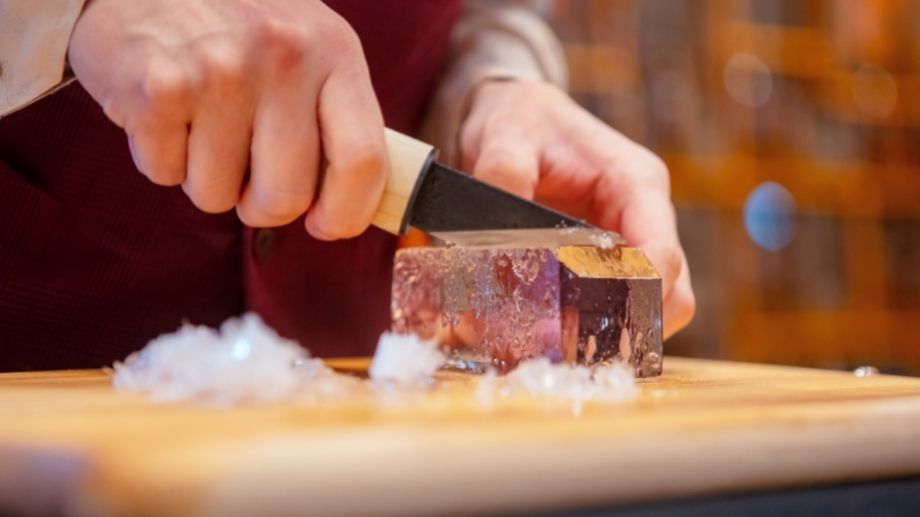
This isn't the easiest way to make clear ice but it can work if you have no other options.
To make clear ice with salt water or without a mold you'll need water, a baking pan, a metal bowl, salt and ice or something colder than ice like liquid nitrogen or dry ice.
Here's how to make it:
- Fill your baking tray with ice and then pour a generous amount of salt onto it. This will lower the temperature of the ice which will help to freeze the clear ice we want to make.
- Fill a metal bowl with cold distilled water. The colder the water is and the closer to freezing temperatures already (without actually being frozen) the better.
- Place the bowl inside the baking tray so the cold salted ice begins to freeze the water in the bowl from the bottom up.
- Place everything in the fridge so things don't warm up too much during the freezing process.
- Leave to freeze and check it regularly. If the ice in the baking tray melts then add fresh ice and fresh salt to keep the freezing process going.
- Once the bowl is partially frozen discard the water on top and you should have clear ice.
- Place clear ice in the freezer to properly set before trying to cut and carve it.
What Makes Ice Cloudy? Why Isn't It Always Clear?
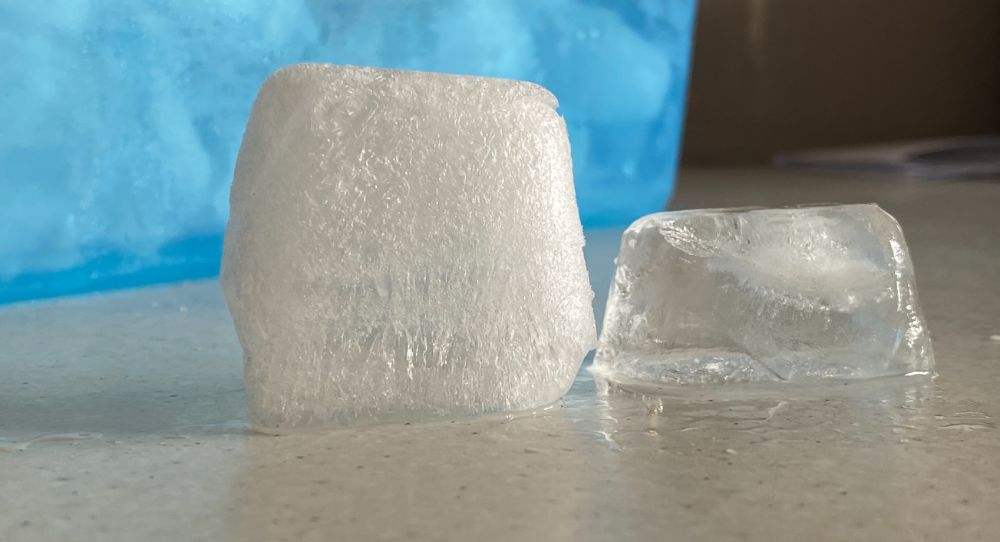
It can be a bit confusing why your water is clear but then when you turn it into ice it comes out all white and cloudy. Why does this happen?
Ice usually turns out cloudy and isn't clear because water contains dissolved gasses as well as dissolve minerals.
When placed in the freezer the water begins freezing from the outside inwards. The dissolved gases get pushed to the center of it ice cube and given they have nowhere to escape to they get stuck there.
The resulting bubbles get frozen into place and refract light in such a way that the ice cubes look white and cloudy.
How Do You Make Ice Balls Without a Mold?
If you don't have an ice sphere tray to make clear ice balls is there another way to make ice balls?
There are actually 2 main methods for making ice spheres or ice balls without an ice ball tray.
Carve Them Into Spheres With a Knife
The cheapest method to creating ice spheres without a mold is to simply cut clear ice cubes into spheres using a knife.
You can make a big block of clear ice using a cooler and cut ice cubes to size, or you might have some square clear ice molds.
Then hold the ice cube with a tea towel and begin to carve it with a knife. You can see how it's done in the video below:
Use An Ice Press
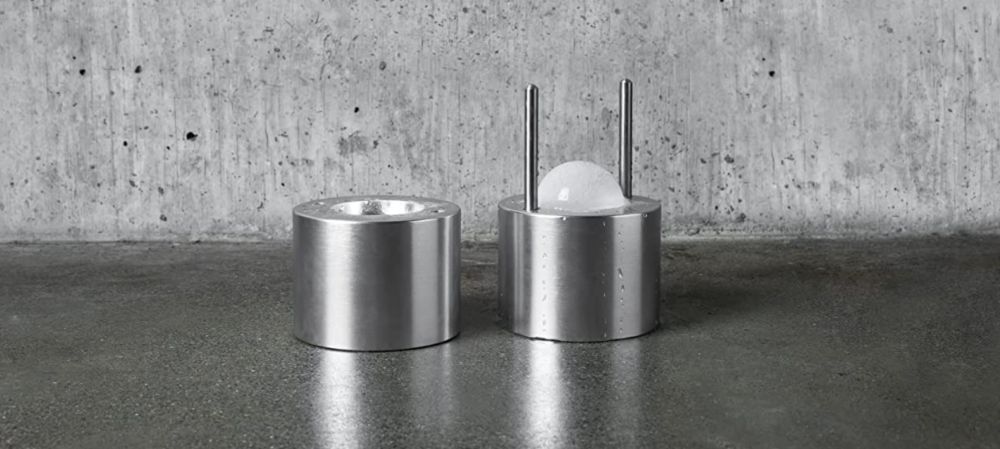
An ice press (also called a Japanese ice press) creates ice spheres by using a mold made of solid metal.
Ice presses work by using aluminum to melt the ice down leaving the sphere behind. Aluminum is a great conductor of heat so it can melt the outside of the ice (the part you don't want) relatively quickly.
You can see an ice press in action below:
Do Clear Ice Molds Work?
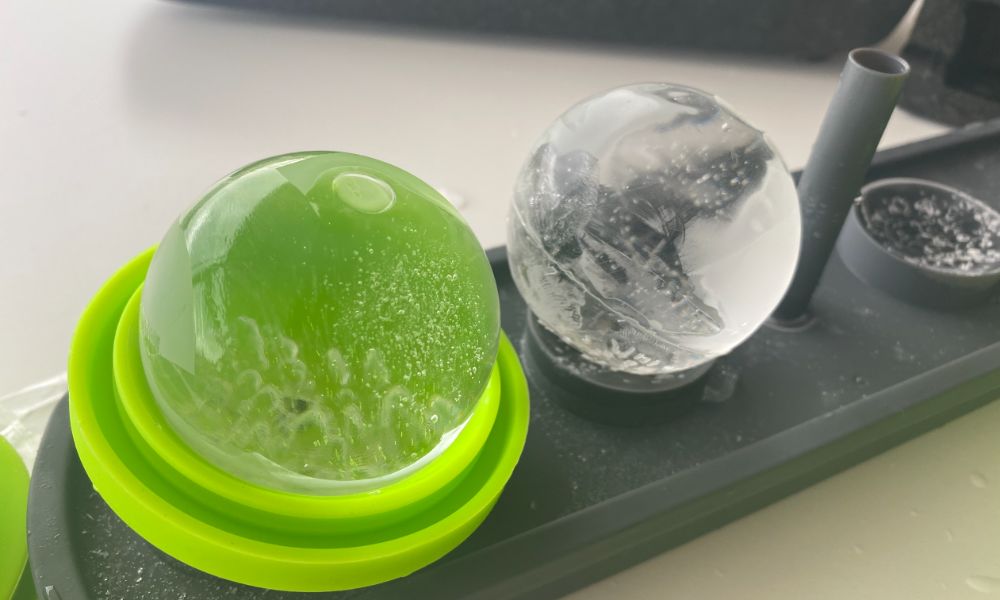
Clear ice molds like sound like a gimmick or a scam, but do they actually work?
Yes, clear ice molds do work and they are quite effective at creating crystal clear ice.
However, they aren't fool proof and sometimes you'll still get some bubbles and white spots in your ice cubes.
For the best results make sure to use distilled water to make clear ice and turn your freezer down so the ice freezes more slowly.
How Do Clear Ice Molds Work
Clear ice molds work pretty well at creating crystal clear ice cubes and they are one of the easiest ways to make clear ice cubes. But how exactly do they work?
Clear ice molds are fairly simple and they all work in the same way. In fact, it uses the same methods to create clear ice that allows you to make clear ice in a cooler.
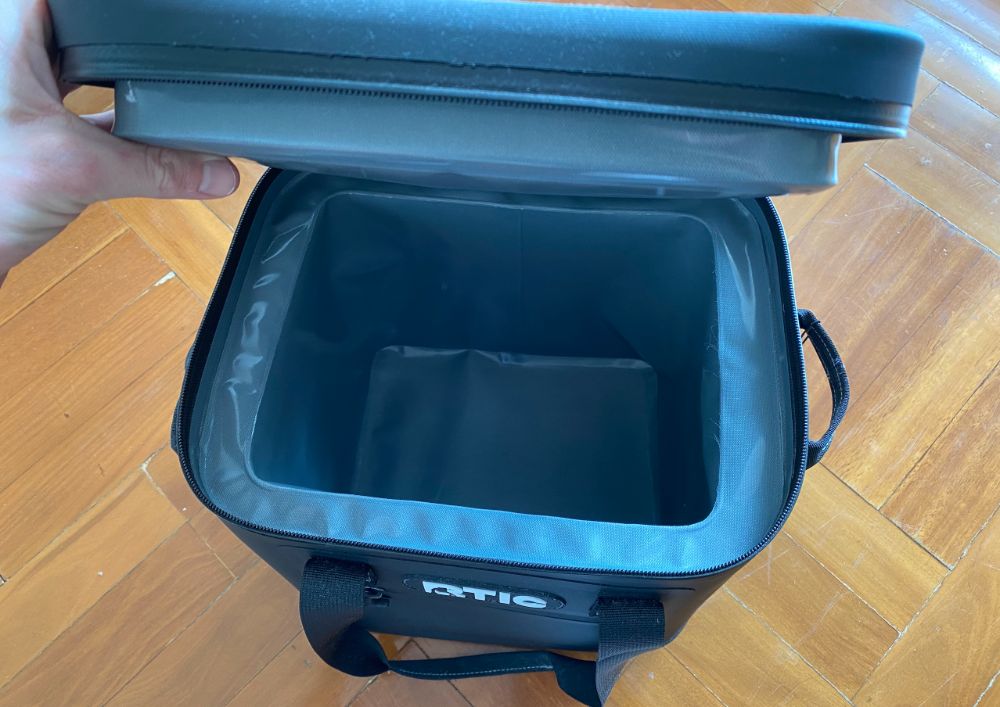
See clear ice makers feature insulation on the sides and base of the mold. This insulation (similar to what a cooler uses) stops heat transfer.
This means that the cold air of the freezer cannot access the water through the sides or the bottom of the clear ice mold but only through the top. This forces the ice to freeze in a single direction and to push the air downwards as the ice freezes.
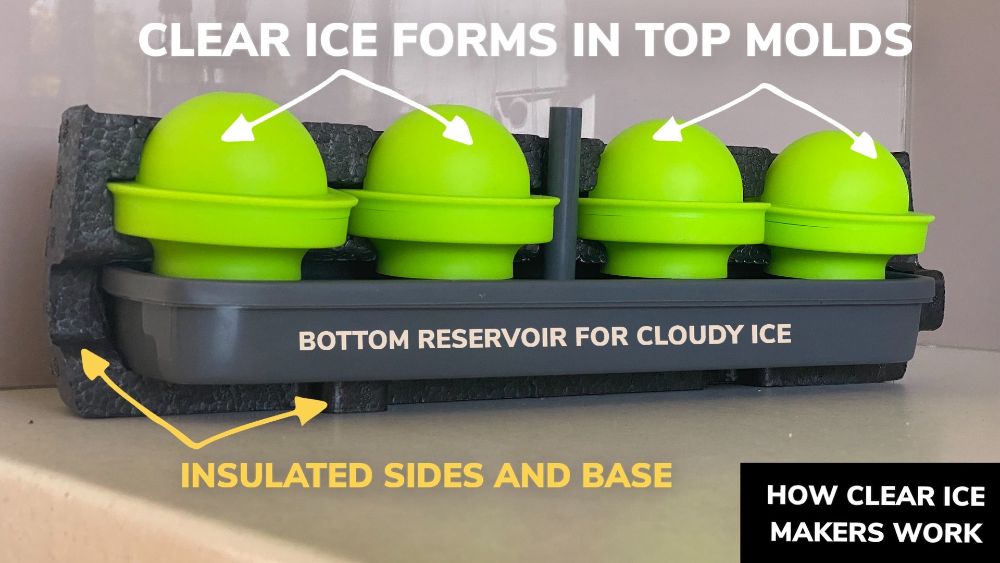
Clear ice molds feature an upper reservoir, where the clear ice is made, as well as a lower reservoir when the air bubbles from the ice molds at the top is pushed into.
This means as the ice freezes the ice in the molds is completely clear but the ice in the reservoir will be completely white and full of bubbles.
But that's ok because the ice in the bottom reservoir can just be discarded.

